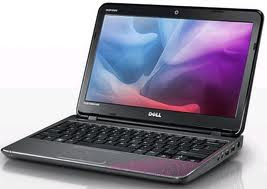Although we've seen the Dell XPS 15 L502X before the P11F is
a slightly different ? laptop that comes with a touch screen. As an
entertainment-focused laptop the touch screen offers a different way to watch
DVDs, for example, letting you select options on-screen rather than use the
touchpad, making the experience ever-so-slightly easier. However, when
navigating around Windows it really isn't much of an advantage.

Although Windows 7 was designed to support touch screens,
there are still too many fiddly menus to navigate, and pressing the screen of a
laptop feels slightly odd in comparison to pressing the screen of a handheld
device. It takes some getting used to, but ultimately you'll still probably
find yourself using the physical keyboard and touchpad for most tasks. Bear in
mind, though, that Windows 8 will be much more touch-friendly and is likely to
be released in around a year's time. So if you're prepared to wait and make the
upgrade to the next-generation of Windows when it comes the Dell XPS 15 L502X
P11F could come into its own.

The touchscreen on the Dell XPS 15 L502X P11F seems to be little more than a
gimmick. There's no stylus provided, meaning you'll be using your fingers, and
the screen's glossy finish shows up greasy fingerprints a treat. It's also a
pain to use in bright conditions, the reflective finish meaning that you need
to be careful where you place the laptop in relation to any light sources.
If you want to watch movies on your laptop the Dell XPS 15 L502X P11F is a
pretty good choice, although far from perfect. The screen doesn't support full
HD (though you will find variations of this model available with a resolution
of 1920x1080, albeit without touchscreen functionality) and the standard
optical drive doesn't read Blu-ray Discs, but again you can pay extra for this
feature should you want it. It's the audio quality, provided by the JDL speaker
system, that really make the entertainment experience – you won't need to worry
about rigging the Dell up to external speakers in order to get high quality surround
sound.
Gaming, too, is well catered for – the Dell XPS 15 L502X P11F managed
minimum frame rates of 31fps in the FEAR graphics test on maximum settings,
suggesting that you'll be able to run most games without too much trouble. The
1GB GeForce 525M graphics card seems to be a strong performer, and you do have
the option to upgrade this component too.
Overall performance is good, though not outstanding, a WorldBench 6 score of
117 indicative of a system that will deal with everyday tasks easily, though
might lack the grunt to deal with high-end applications. The battery life was
short of five hours, which is slightly disappointing and could prove
problematic if you can't access the mains for any period of time. At just under
2.8kg it's too heavy to carry around for long periods.
There's 4GB of RAM, expandable to 8GB should you want, and the Dell XPS 15
L502X P11F's hard disk will provide you with 500GB of storage. The high-speed
USB 3.0 interface is catered for, there's HDMI (though no VGA) and a mini
DisplayPort too. You'll also find a combo USB 2.0 and eSATA port.
The design of the Dell XPS 15 L502X P11F is fairly smart, though suggests an
entertainment-focused laptop rather than an office worker's tool, and it feels
fairly sturdy too. The keyboard is slightly odd, with a wide but short Return
key and a Caps Lock key that is far too big and easy to accidentally hit when
you're gunning for the A. The touchpad is nice and big, and very easy to use,
which only adds to our doubts about the usefulness of a touchscreen.





























